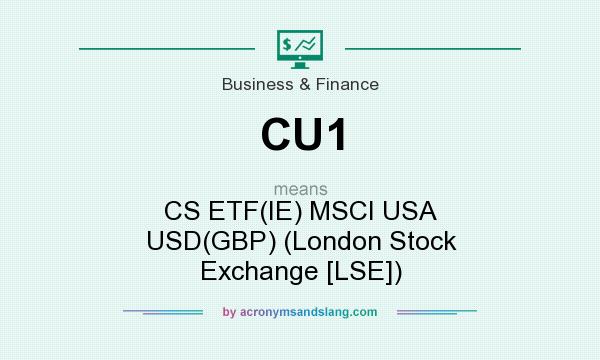In banking, ACH stands for Automated Cleaning House, which is a network that collaborates electronic payments and automated money transfers. ACH is a way to move cash in between banks without utilizing paper checks, wire transfers, charge card networks, or money. References to ACH can imply several things, depending upon where you see it. On statements or in your transaction history, ACH suggests that an electronic payment has been made to or from your account using your monitoring account details - How old of a car will a bank finance. Common examples of ACH transfers appear listed below. For any ACH transfer to move funds to or from your account, you must authorize those transfers and offer your bank account and routing numbers.
Other terms consist of e, Checks, EFT, or Vehicle, Pay. Instead of composing a check or entering a credit card number every time you pay, you can supply your checking account information and pay straight from your account. Sometimes, you manage when payment happens (the funds just move when you request a payment). In other cases, your biller instantly pulls funds from your account when your costs is due, so you require to be sure you have funds available in your account. Watch on your accounts and when different payments go through, although payments are automated.
There's no need to manually deal with payments (on your part or the biller's). ACH is a "batch" processing system that deals with millions of payments at the end of the day. The network uses two main "clearing houses." All demands run through either The Federal Reserve or The Clearing House. This permits effective matching and processing amongst numerous financial institutions. You probably have more experience with ACH than you recognize. Individuals and businesses utilize ACH for everyday transactions such as: Direct deposit of your salaries (from your employer to your savings account) Automatic payment of recurring expenses such as energy expenses, insurance coverage premiums, and Homeowners Association (HOA) dues.
Payments from companies to suppliers and providers Transferring money from your brick-and-mortar bank to your online bank Just like any innovation, using ACH indicates embracing the advantages and disadvantages. Let's evaluate those below. Pros Make money much faster with an automatic payment, and without waiting for a check to clear Automating bill payments to prevent late costs and missed out on payments Making online purchases without having to use a charge card or inspect Decrease paper records that bring delicate banking details Generates income transfers simple with very little labor and expense Allows staff member payments without printing checks, packing envelopes or spending for postage Assists in routine consumer payments without having to transfer real paper checks to the bank Has lower charges than charge card payments Electronic process makes supplier and provider payments easier and faster, while keeping electronic records of all deals Automated deals may be less susceptible to error than a manual monthly task Cons Companies have direct access to your checking account Vehicle payments are subtracted whether you have the funds in your account, which can activate overdraft charges Permits other business to have a direct link to your checking account Customers can reverse their payments, although not as easily as with a credit card Must monitor the deals for scams, as organization accounts have less protections than customer accounts Business might require to buy software application and invest in training to procedure ACH payments If you're a private you may enjoy: Making money by your employer rapidly, safely, and dependably.

Automating your payments, so you never ever forget to pay (and your payments show up on time) Making purchases online without using a check or charge card. You pay rapidly and prevent charge card processing charges. Minimizing the number of notepads drifting around with your bank account details. This helps minimize the possibilities of scams in your accounts. The main downside for consumers is that setting up ACH provides organizations with direct access to your checking account. They take the cash to pay your costs whether you're ready to pay or not. If you're brief on funds, you might choose to pay a different way.
How How Does The Federal Government Finance A Budget Deficit can Save You Time, Stress, and Money.

For more details on how sabrina granados customers use ACH, read about establishing ACH debit. If you run an organization you take advantage of: An affordable, non-labor-intensive way to move money Paying staff members without the requirement to print checks or pay postage Getting customer payments quickly, rapidly, and regularlyno more cash-flow crunches based on when you can get to the bank Processing charges that are lower than credit card swipe costs Getting paid by vendorsor paying suppliersin a method that's safe and easy to track (there's an instant electronic record of every transaction) Organizations deal with the exact same issue as customers: There's a direct link to your checking account, and any mistakes or unanticipated withdrawals can cause issues.
That being stated, it's more difficult to reverse an ACH payment than it is to reverse a charge card payment. Businesses need to be particularly vigilant about monitoring for fraud. Customers enjoy a high degree of protection against errors and scams in their bank account, but business accounts do not get the same level of defense. If funds leave your account, it may be your duty to recuperate the funds (or take the loss). Finally, services may require to purchase software or invest time and resources into transitioning to ACH transfers. Nevertheless, they'll most likely recoup those costs quickly over the long term.
The ACH system is a network of computer systems that interact with each other to make payments happen. Two sets of computer systems are at work for each payment: The side that creates a demand The side that pleases the request (assuming all works out, Find more information which it usually does) Utilizing direct deposit as an example, a company (through the company's bank) produces a request to send out cash to an employee's account. The company is called the Begetter, and the company's bank is the Originating Depository Financial Institution (ODFI). hank larkin smith jr. That request goes to an ACH Operator, which is a clearinghouse that gets various demands throughout the day, and then routes the request to its destination. What can i do with a degree in finance.
ACH transactions occur in 2 kinds: are payments to a receiver, such as wages from your company or Social Security benefits paid into your bank account. are requests to pull funds from an account (What is internal rate of return in finance). For example, direct payments take place when billers subtract utility costs automatically from your checking account. Presently, ACH deals do not occur in real-time. Instead, banks utilize "batch processing" to process the whole day's worth of demands simultaneously. As a result, you don't earn money instantly after your company authorizes payment. Rather, the deal takes one or two company days to move through the system. There are strategies to accelerate ACH payments, and same-day payments have actually currently started for selected deals.